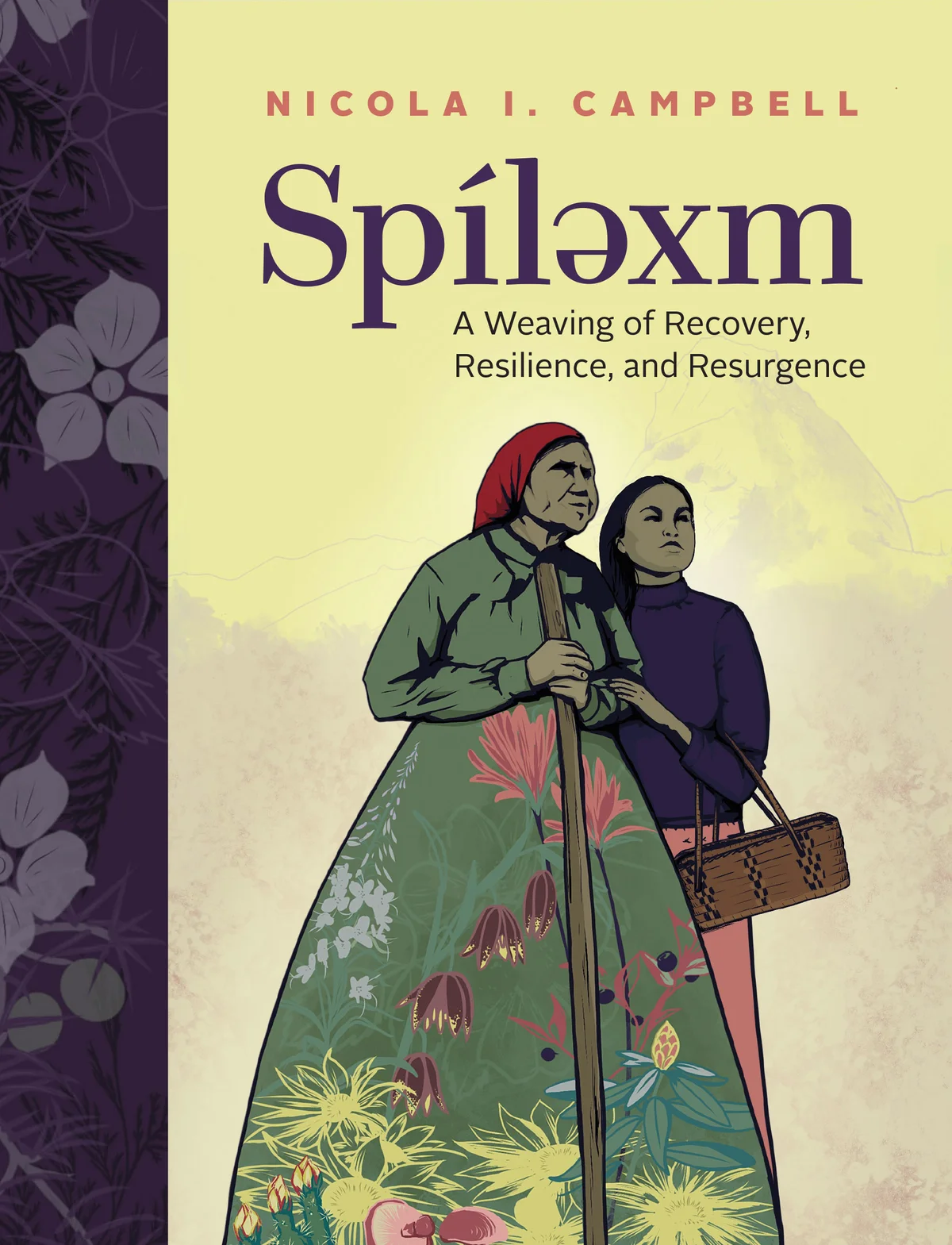
“Spíləx̣m / placed together / as lived memories / reflections, meditations, fragments”
These four lines perfectly describe Nicola l. Campbell’s newest book, Spíləx̣m: A Weaving of Recovery, Resilience, and Resurgence — spíləx̣m meaning ‘remembered stories’ in Nłeʔkepmxcín. The UBC Okanagan doctoral student combines poetry and prose to tell stories from her life as well as compelling personal essays on colonialism and its ramifications.
Don’t let the poetry deter you, Campbell’s work is easy to understand and uses imagery to immediately paint a vivid backdrop. Her poem “race day” is a perfect example. I’ve never been to a canoe race, but while reading the piece, I was there — I could hear the cheers from the sidelines, I could feel the mist on my face from the water as her team paddled, the relief in their chests when they passed the finish line as champions — despite never leaving my living room couch. Campbell’s ability to transport her readers comes from her unique voice and style.
She uses a blend of languages, with Nłeʔkepmxcín, Nsyílxcn and Halq’eméylem words mixed into the English stories. Some, but not all, of the pages have a translation, but there is a glossary that provides translations for all of the non-English words.
History
Campbell weaves history into her stories, providing background information to the audience about some of the historical laws that are of importance to Indigenous peoples. While some may wonder if its inclusion is necessary, it becomes evident that it is.
Despite there being legislation that have “ensured” Indigenous rights and freedoms in the Royal Proclamation of 1763, their rights to the land have been “stolen, molested, and disturbed as were Indigenous women and children, in conjunction with the decimation of our ancestors caused by colonial diseases.” The diction here is just as precise and powerful as throughout the book and Campbell uses it to stress, especially to non-Indigenous readers like myself, that the government’s actions have had, and will continue to have, ramifications upon Indigenous lives.
Campbell also points out specific effects of the colonial government, like how grade-school students learn about the peoples from Haida Gwaii and some parts of Eastern Canada but not the Indigenous groups whose land they are learning on.
The passages that include historical aspects and the government are very thought-provoking and invite deeper reflection upon one’s view of Canada.
Healing
Love was the first thing that was stripped from Indigenous children at residential schools and so it is the first thing that needs to be given, Campbell says.
She often refers to the sorrow and grief that comes with intergenerational trauma as a blanket; it is all encompassing and covers every aspect of life. But she says there is a capability to weave a new blanket — one “made of love, joy, healing, and perseverance.” We might not have control over the hand dealt to us, but we can control how we move forward, as Campbell affirms.
Throughout the book, she emphasizes that the process of healing is worth it, not just for oneself but for one’s community as well, stating that “when we choose to begin our healing journey, we create waves that inspire everyone around us.” There is something very universal about her words here that left even me feeling inspired to start my own healing journey.
Campbell also gives an important reminder: “Healing is a lifestyle. Setbacks don’t mean failure, it is time to pause, to reflect, and to realign.” This touches on another truth; that there is no finish line to healing. It will always be a part of one’s life but that doesn’t mean it’s not worth it to try.

